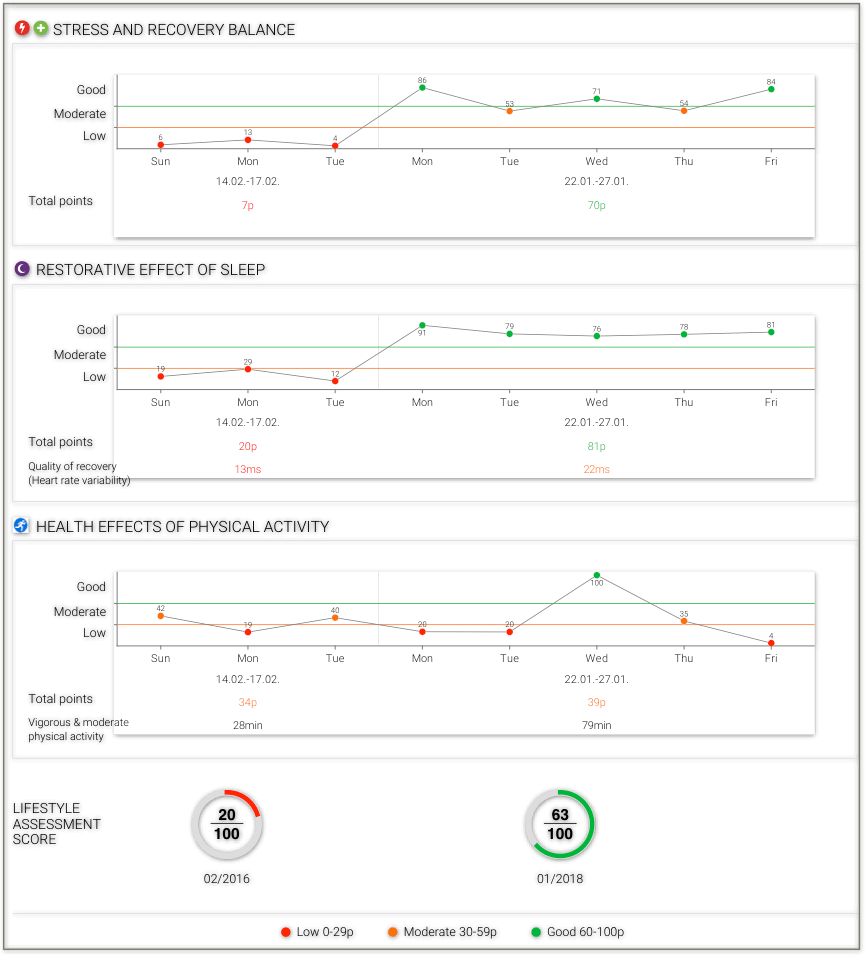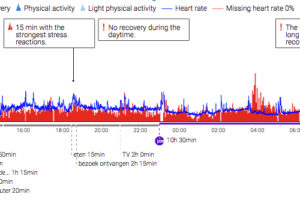The special value of the multi-day HRV measurement is that it provides a reliable insight into the physiology of the autonomic nervous system (ANS) during normal daily activities. And since the ANS is one of the important control systems with a direct link to stress and the response of the organism to it, it is a wonderful tool to map out the impact of stress on a personal level. More than this, it is unparalleled to provide an insight into the quantity and quality of the recovery of individuals and the role of the Nervus vagus. Aspects of our functioning which time and time again shows that people can not judge for themselves with any possibility.
Special attention this time for the relationship N. Vagus function and the HRV analysis. The N. Vagus, also called the 10th cranial nerve, is the main component of the parasympathetic system of the ANS. The importance of a normal N. Vagus function requires little explanation, but can easily be illustrated on the basis of the large number of scientific publications on the subject of N. Vagus and health.
There is a scientific consensus about the fact that the average nocturnal HRV value (RMSSD) is a direct measure of the activity of the N. Vagus.
This value (the RMMSD in the night) has an age-dependent lower limit.
In the following example, that limit is 15 ms.
It concerns the treatment of a woman with a cancer history. As can be seen in the image above, there was initially a poor recovery and a too low average RMSSD at night (= 13 ms). So there was a bad N. Vagus function. Scientific research shows that the N. Vagus function directly affects the prognosis in cancer. A better N. Vagus function gives a better prognosis.
In the treatment / counseling of someone with cancer in the history, it is therefore always important to know how it is with the N. Vagus function.
Here we see an example of the result after approximately 11 months of treatment, where the RMSSD has been improved at night to above the age-dependent lower limit to 22 ms and the total Lifestyle Assessment score improves from 20/100 to 63/100.
Improving a bad N. Vagus function takes time, but then only succeeds with the right intervention. We have developed a protocol for this that we can not print here because of the strict legislation. Professionals can request this protocol by sending us an e-mail!





